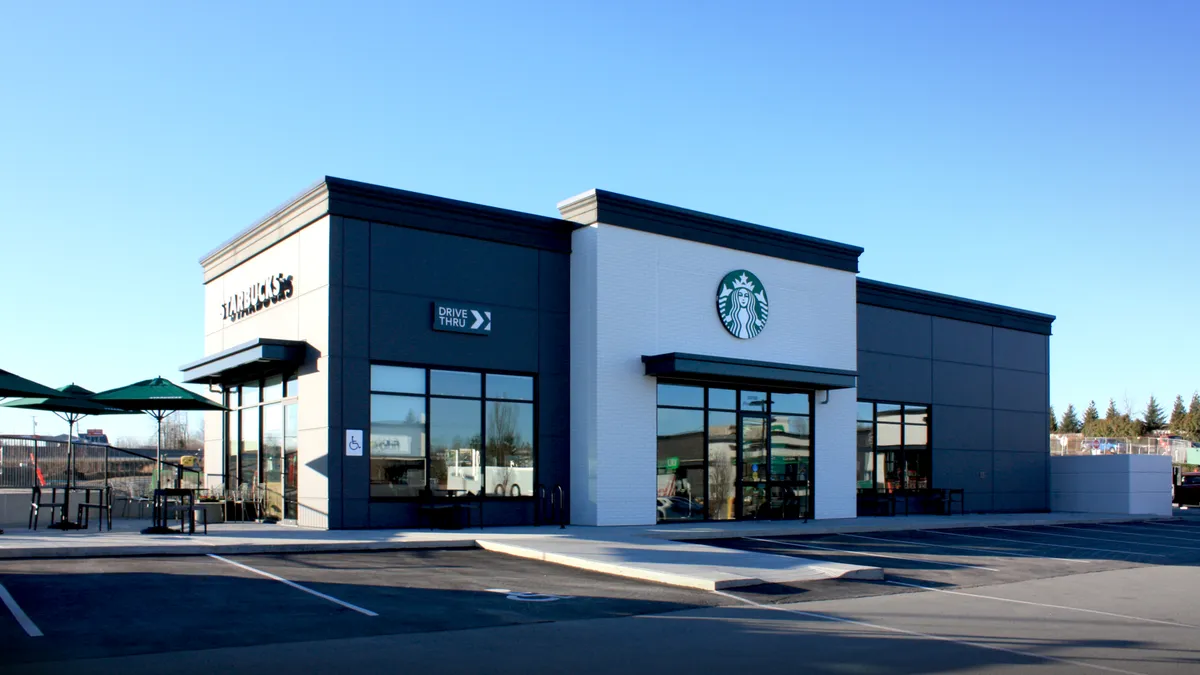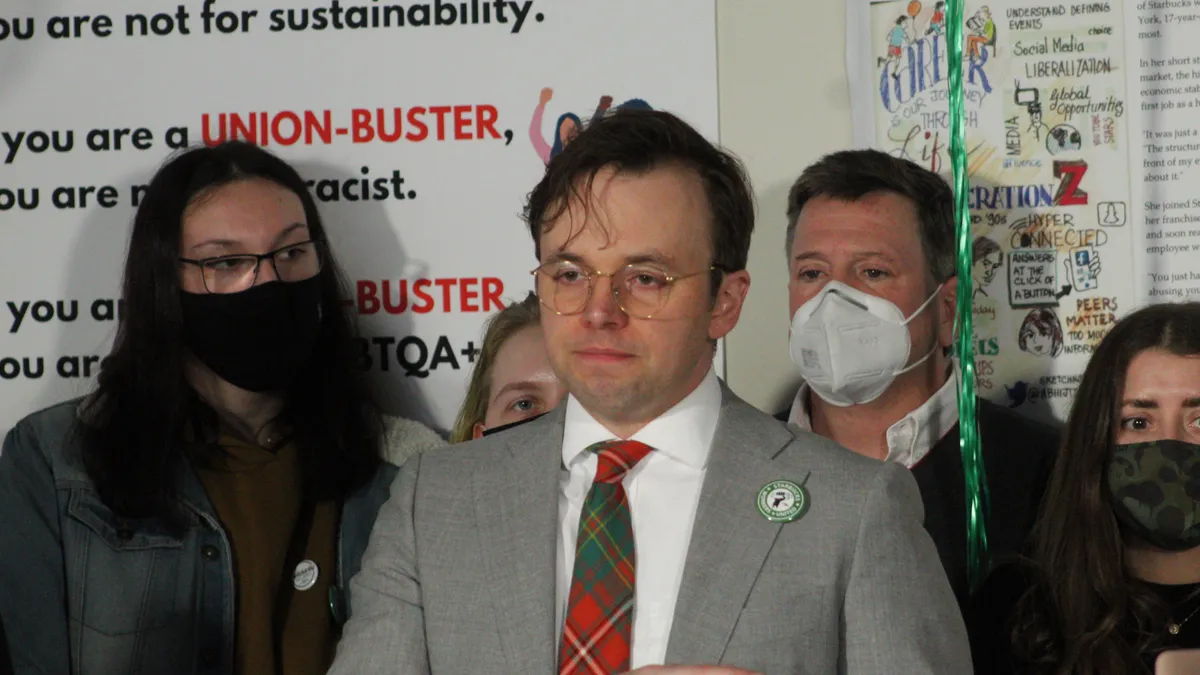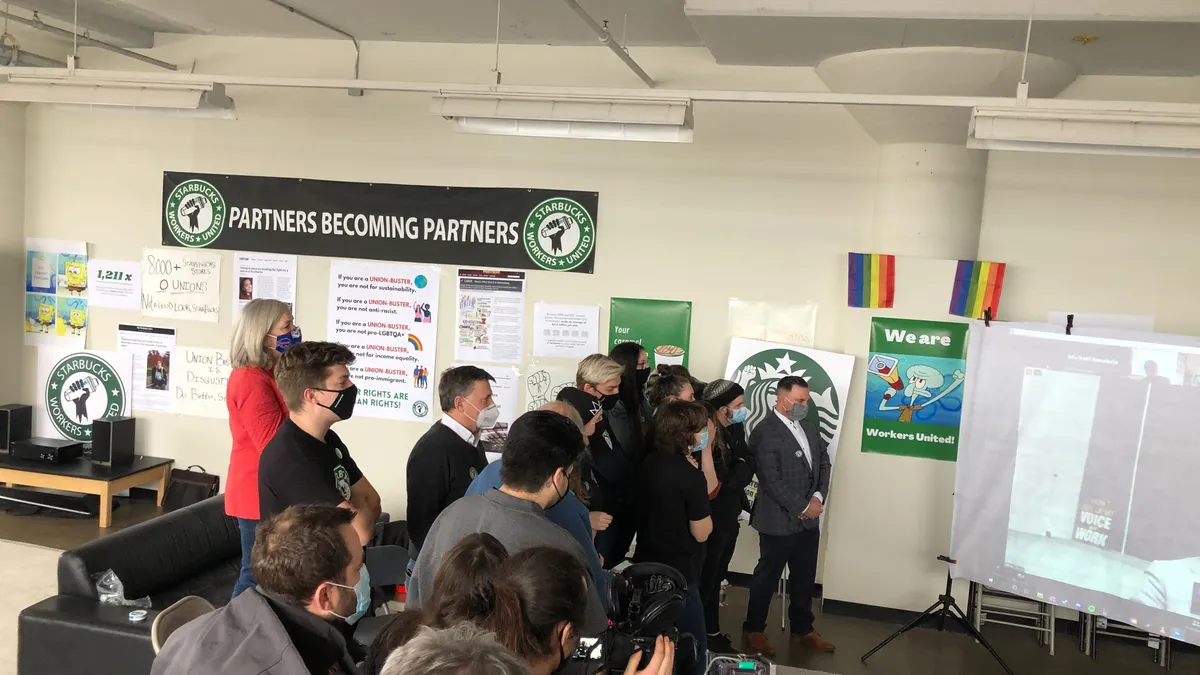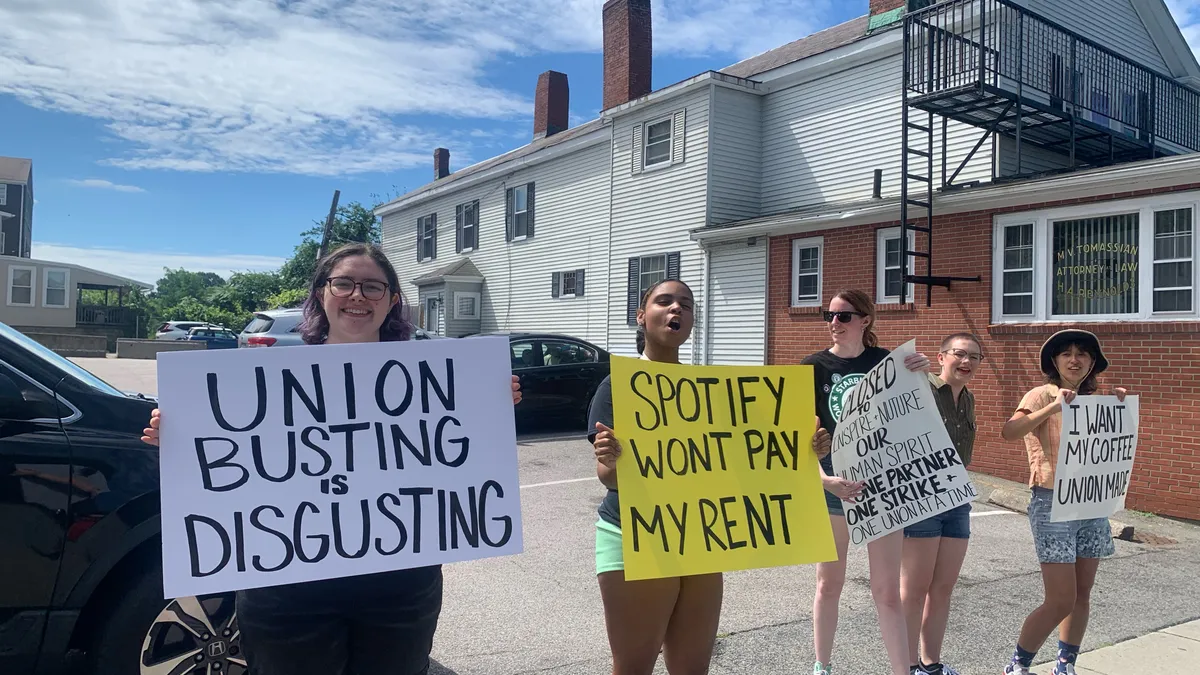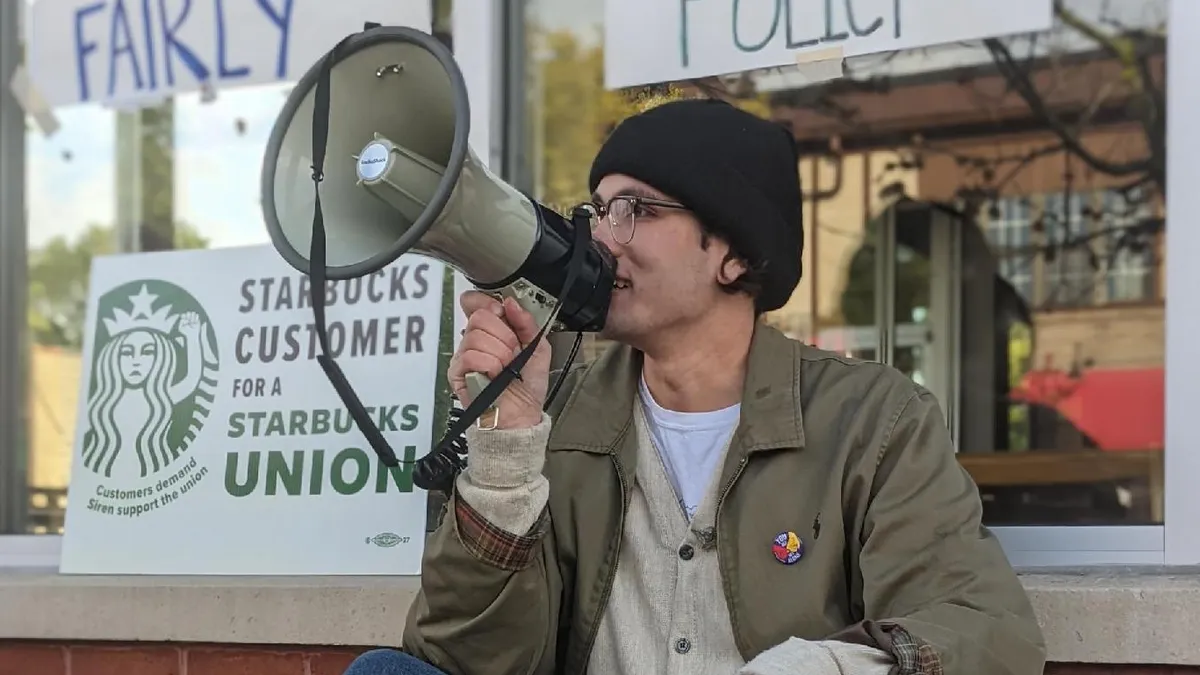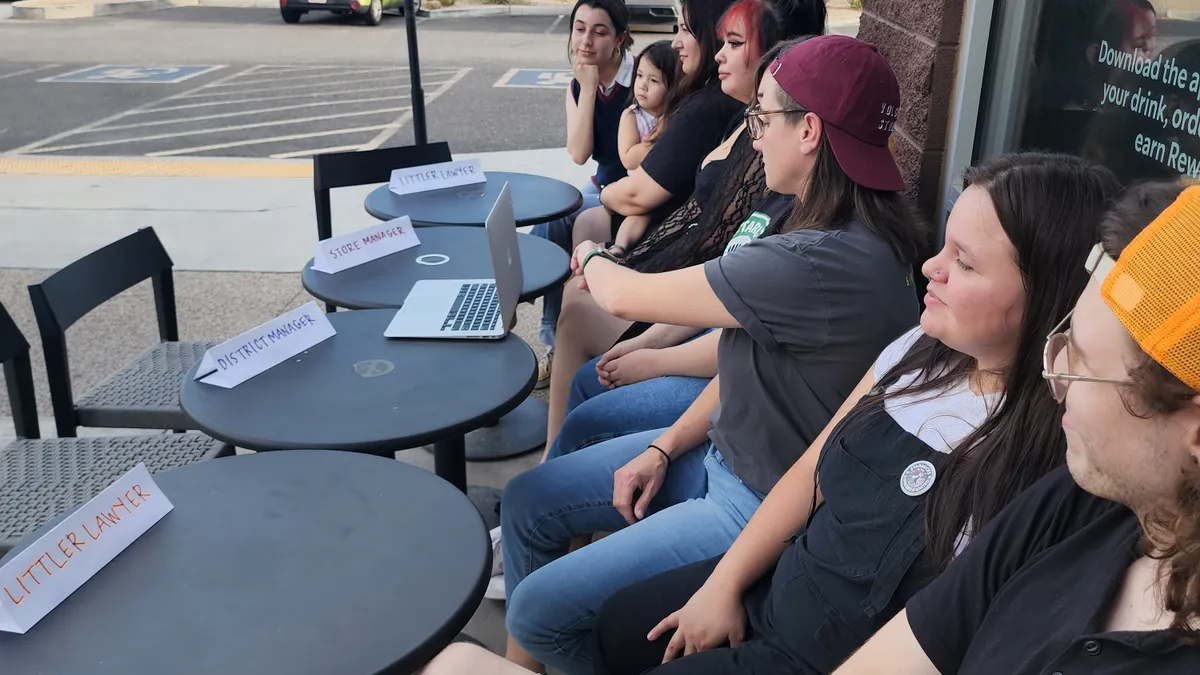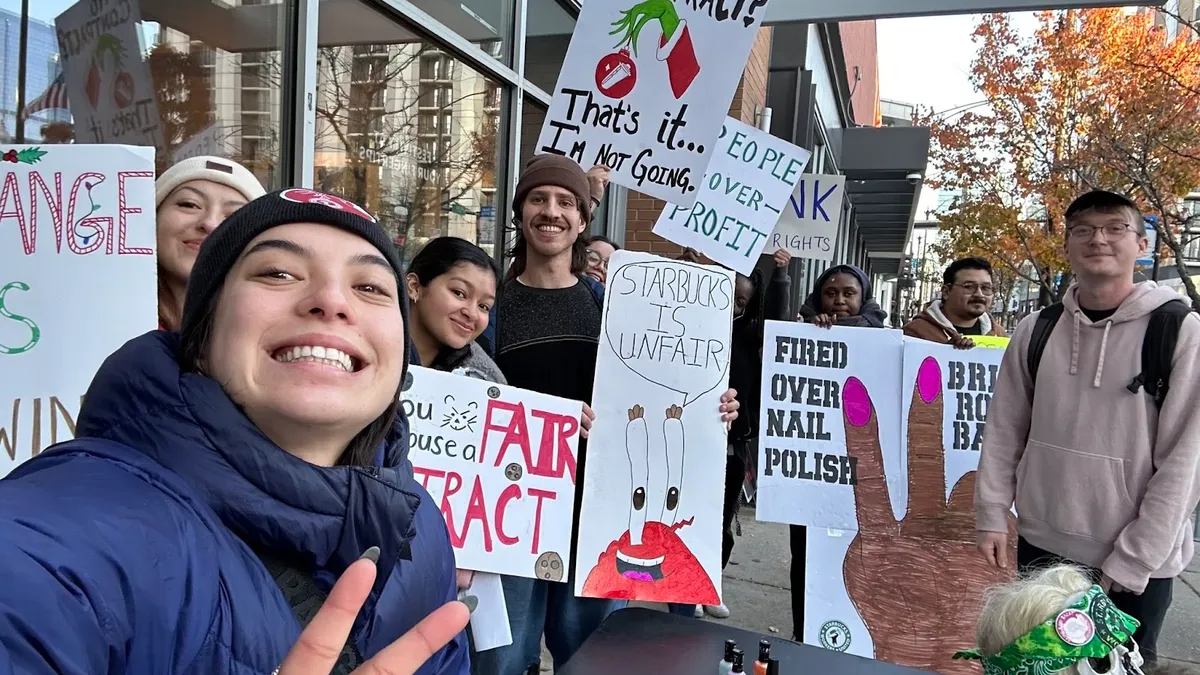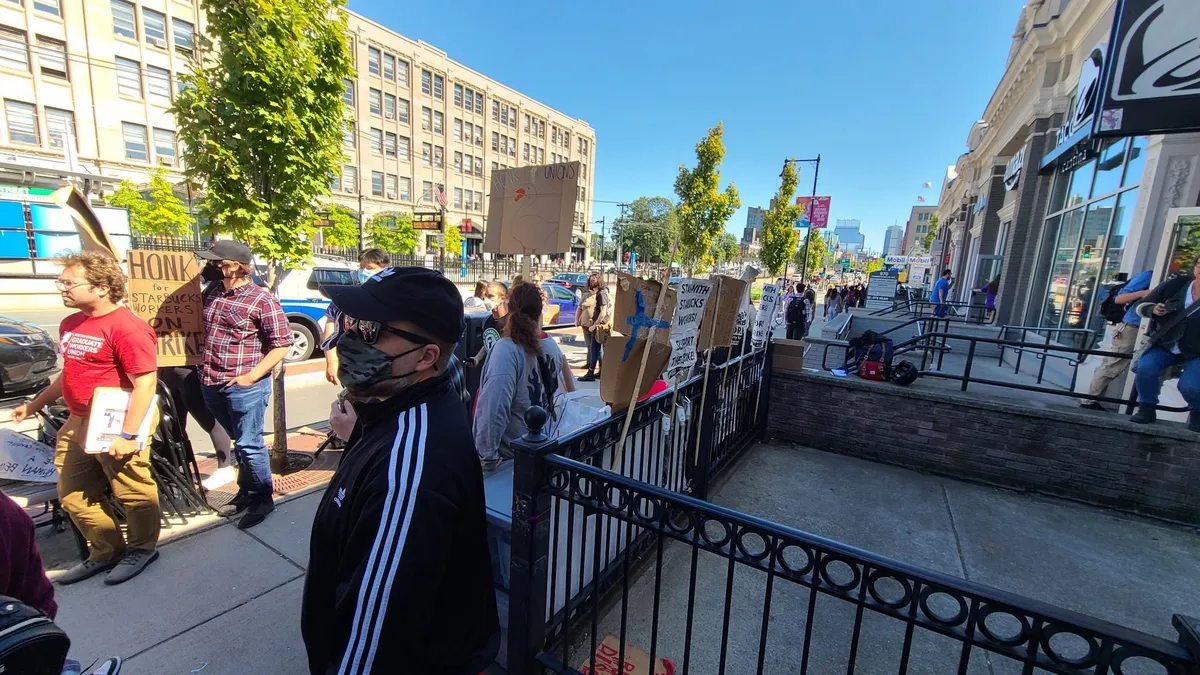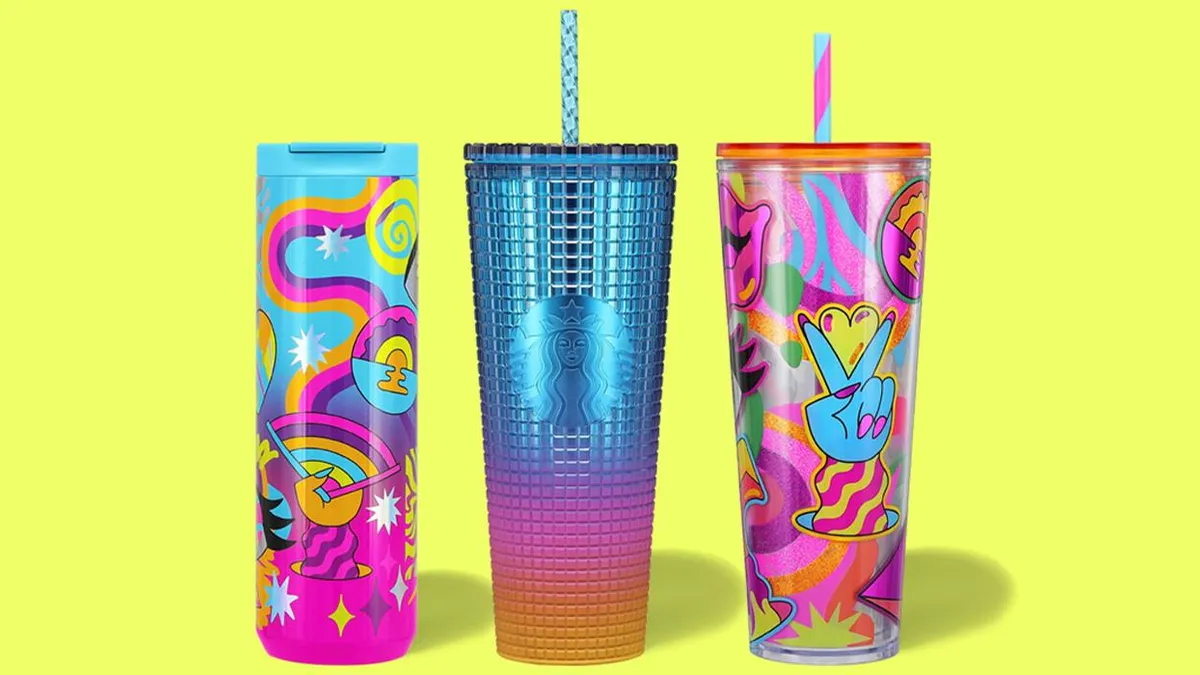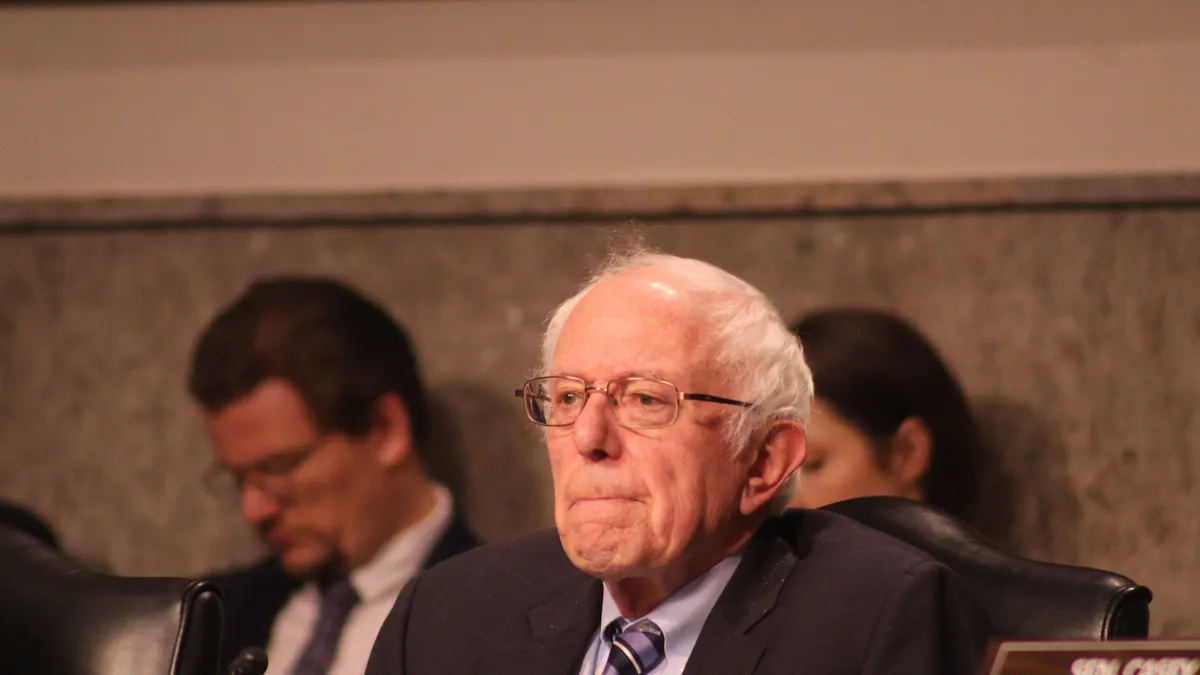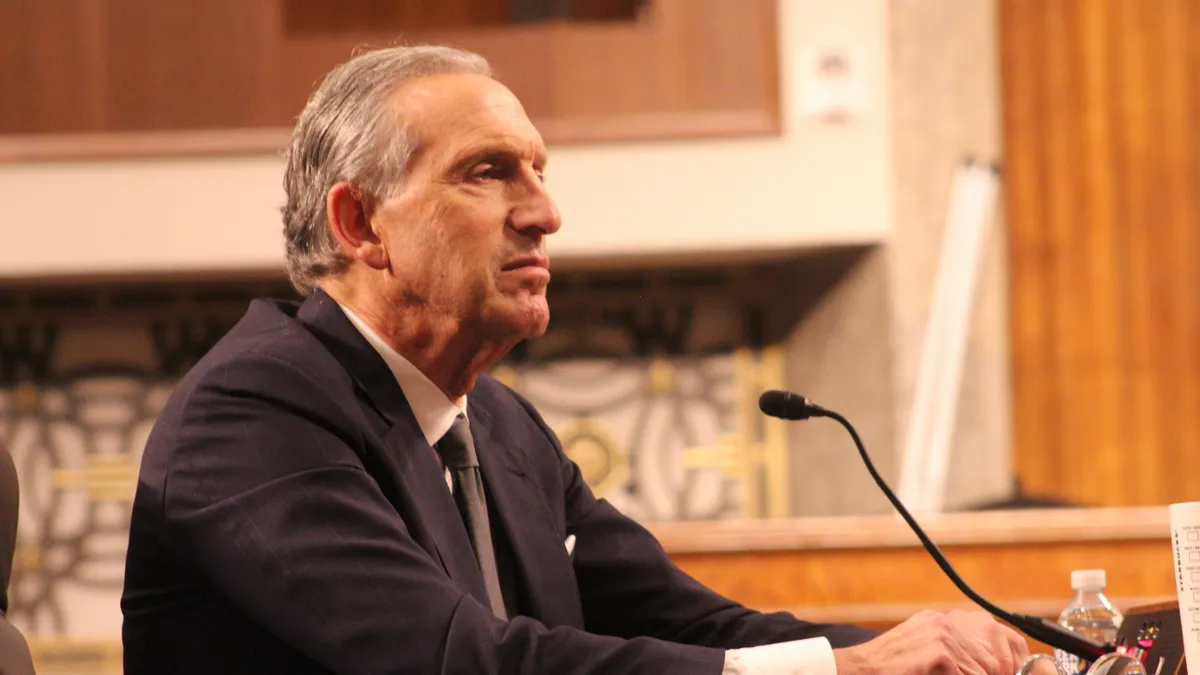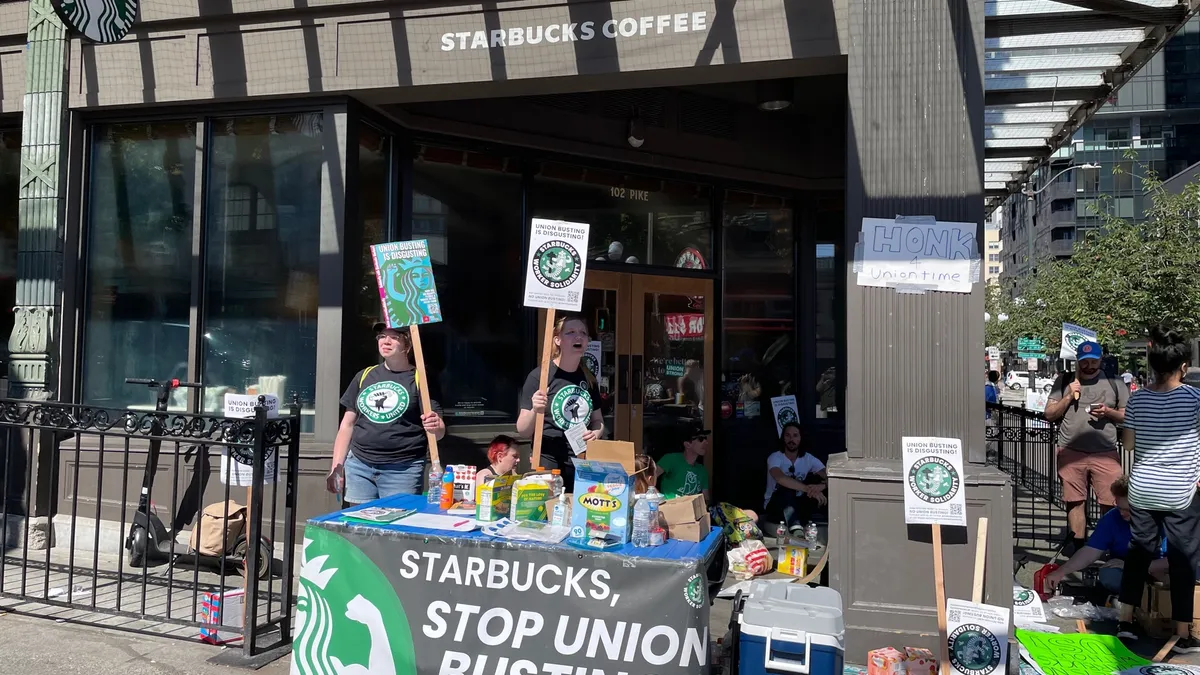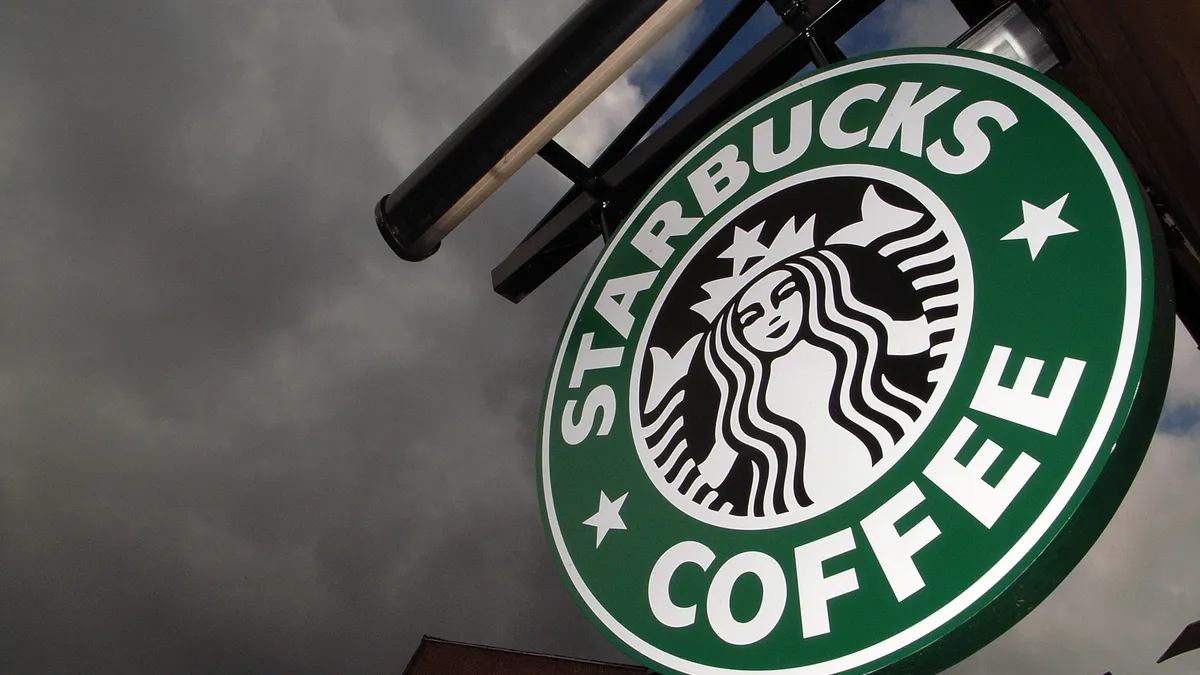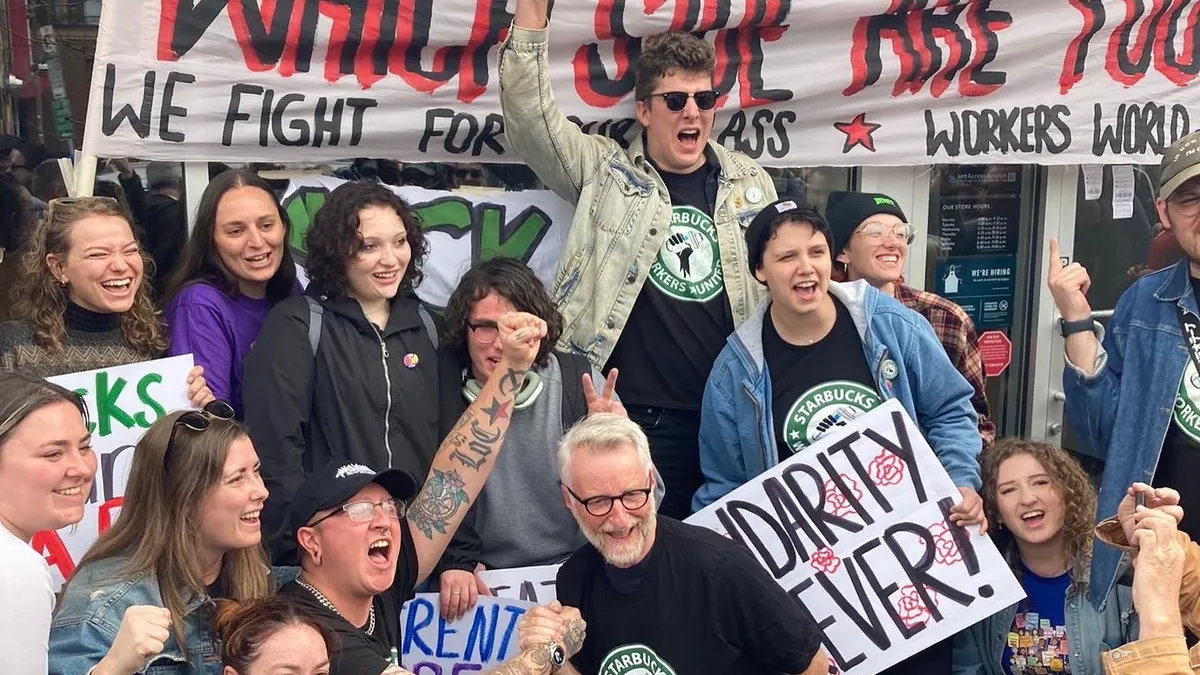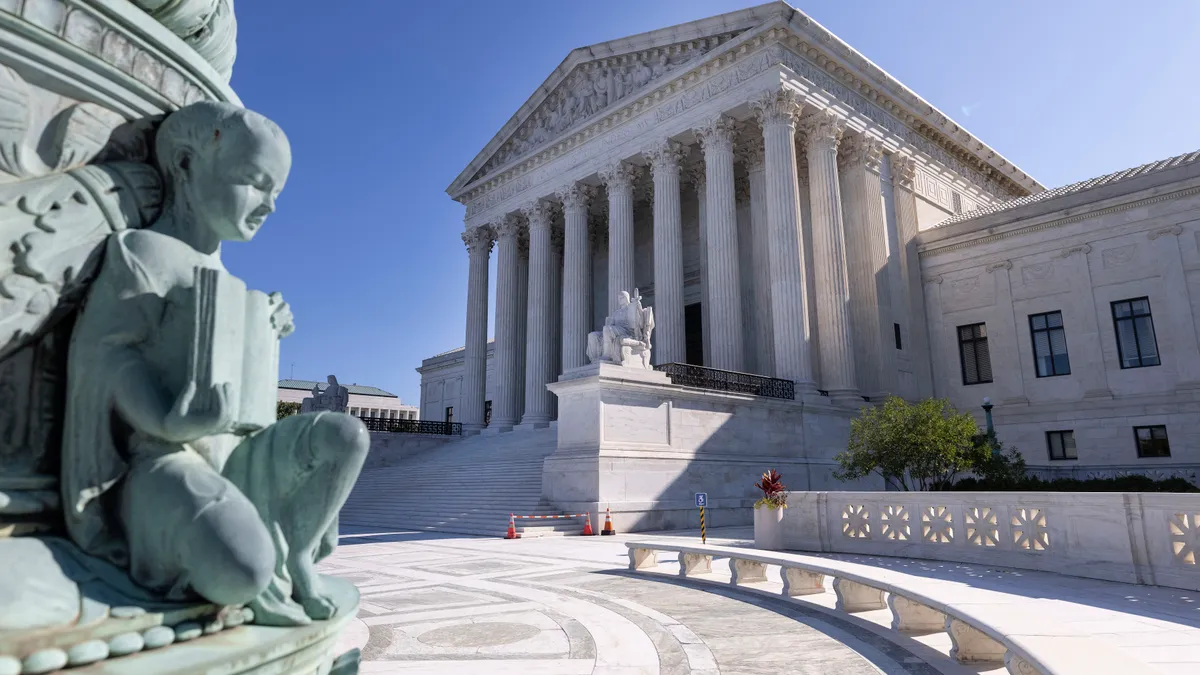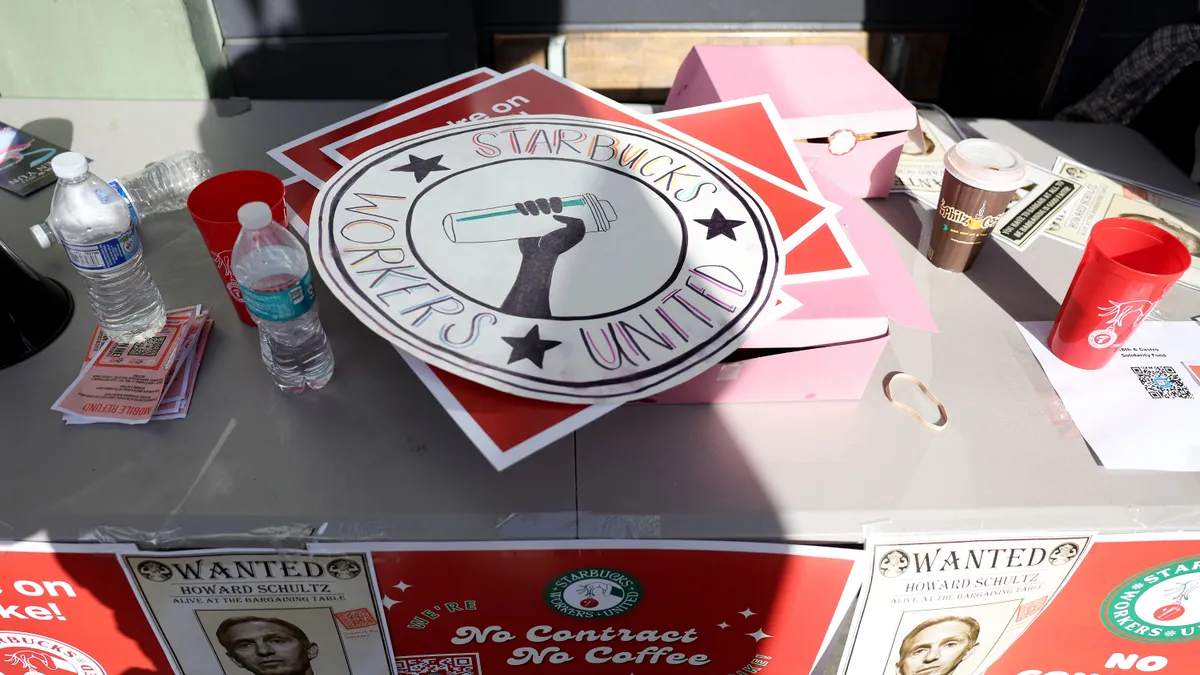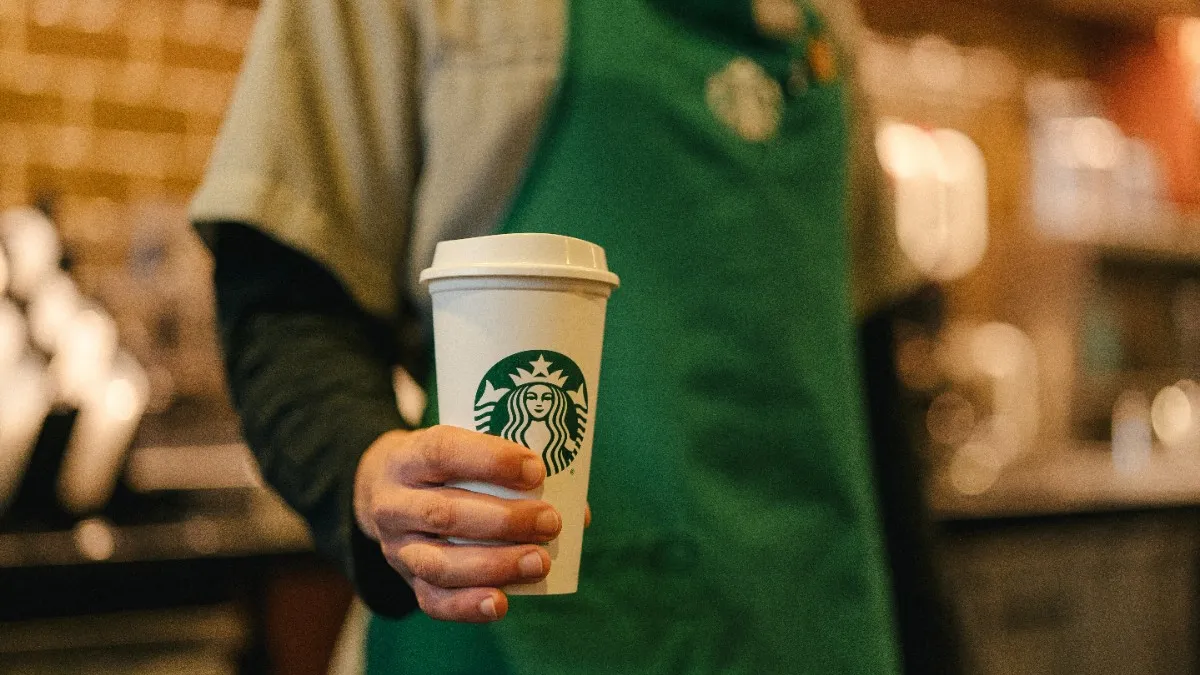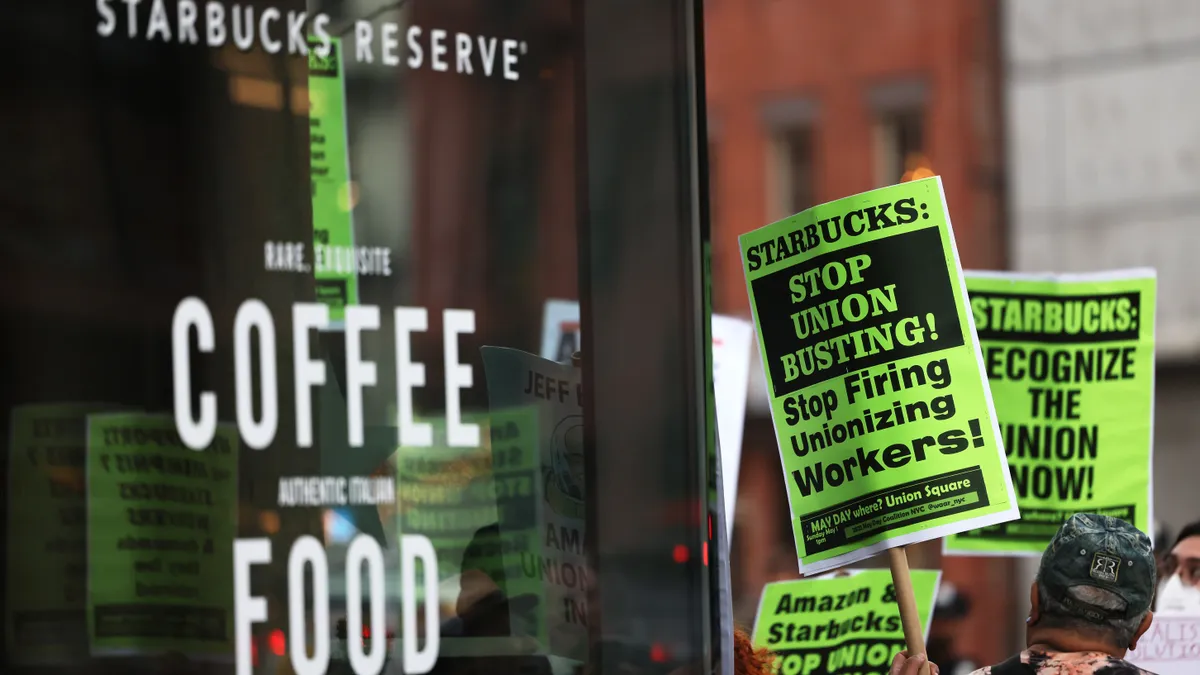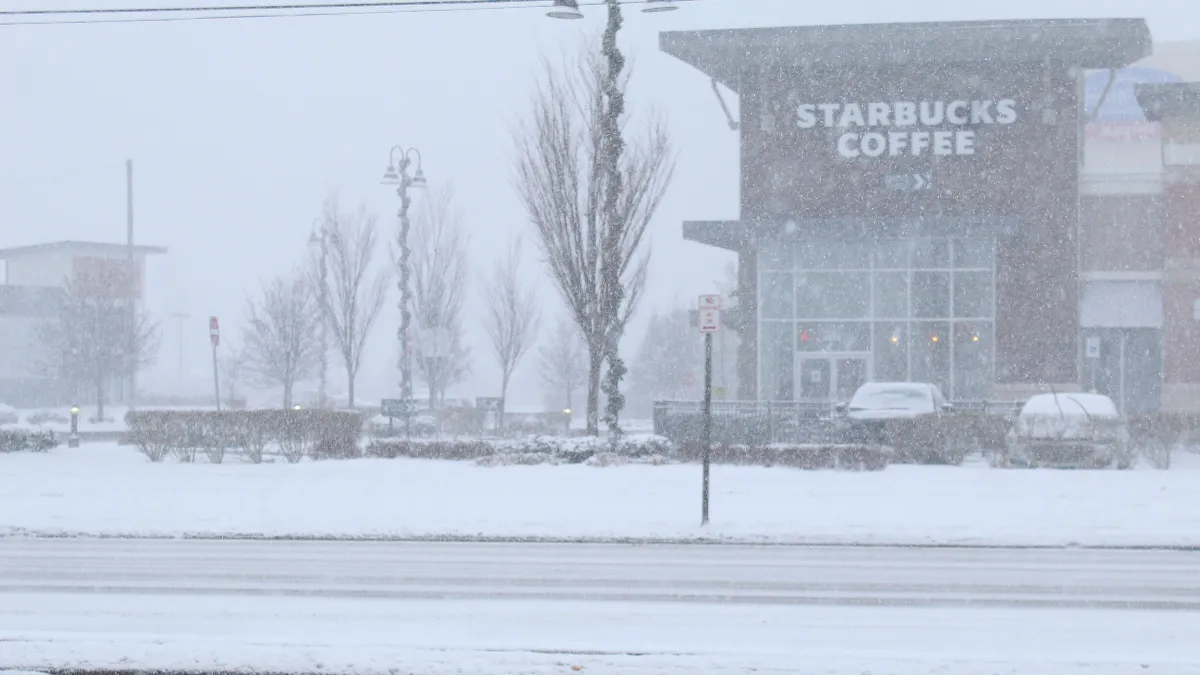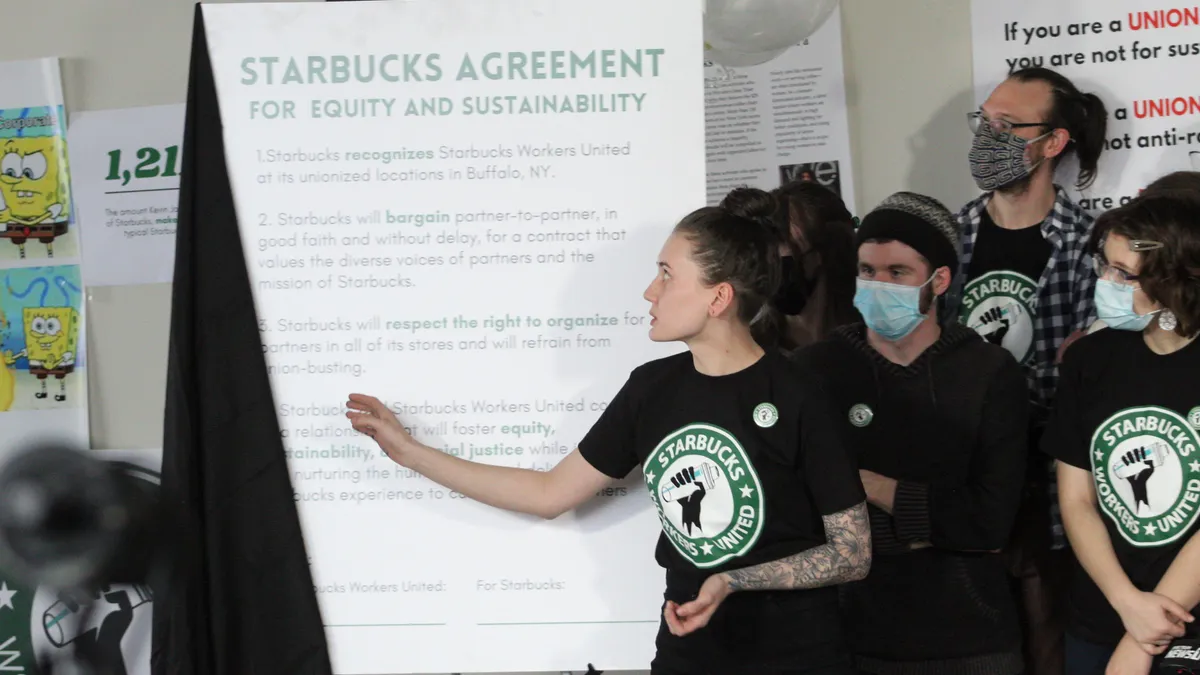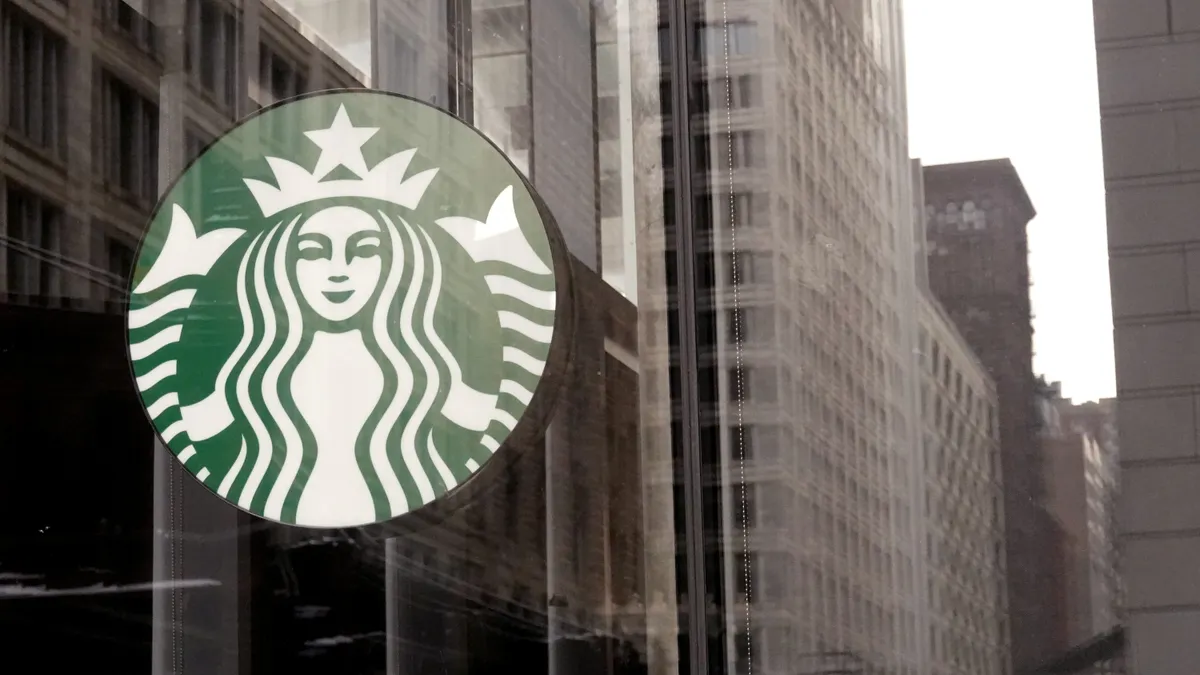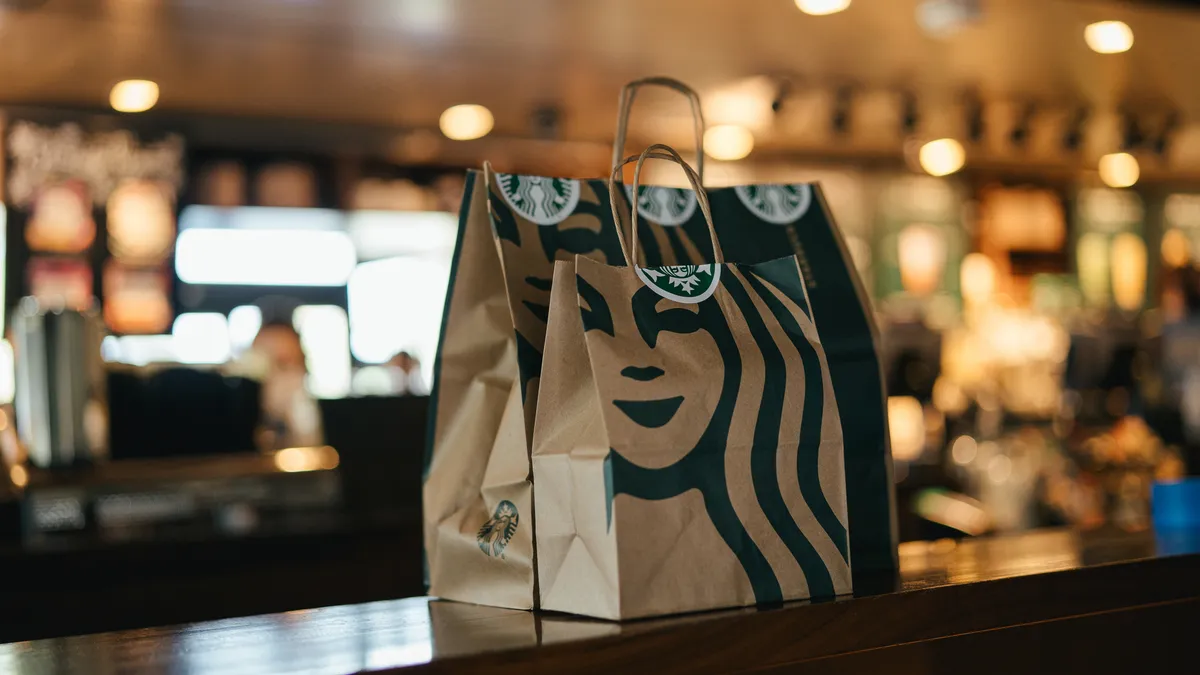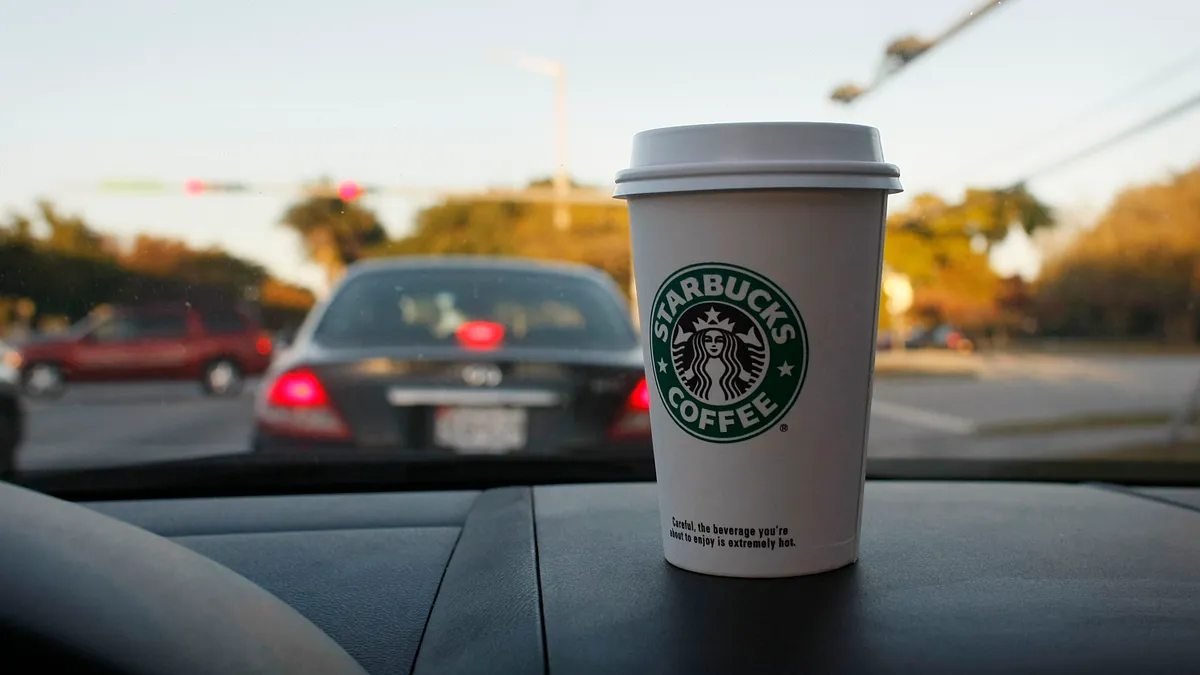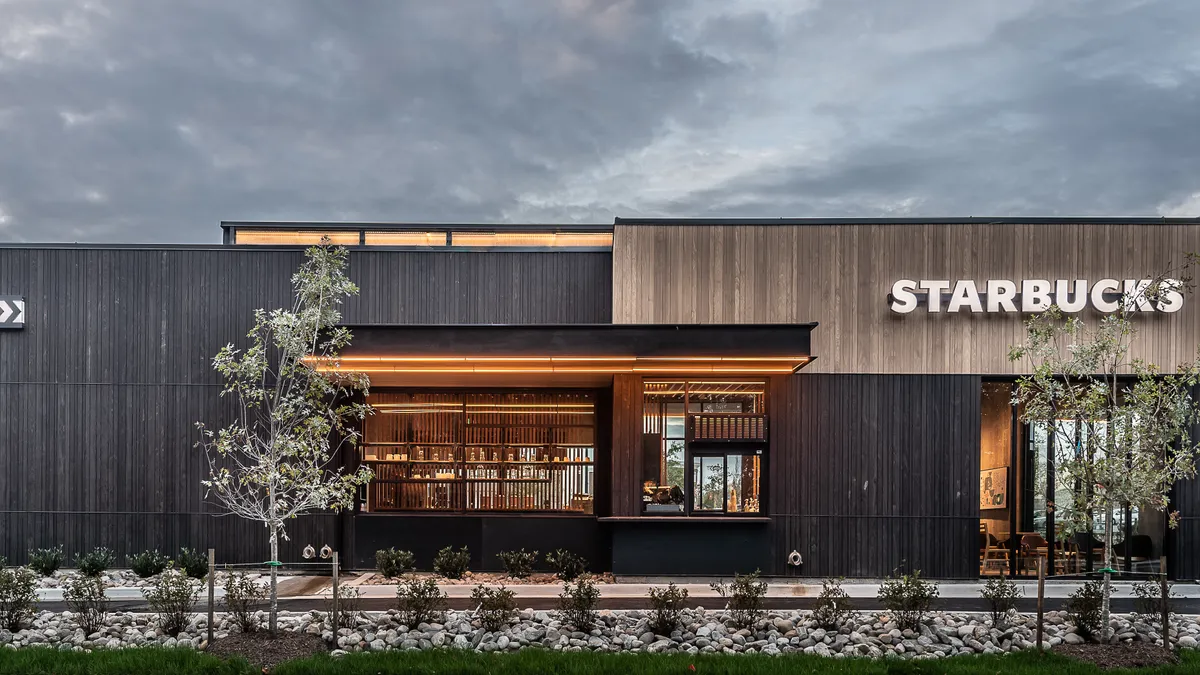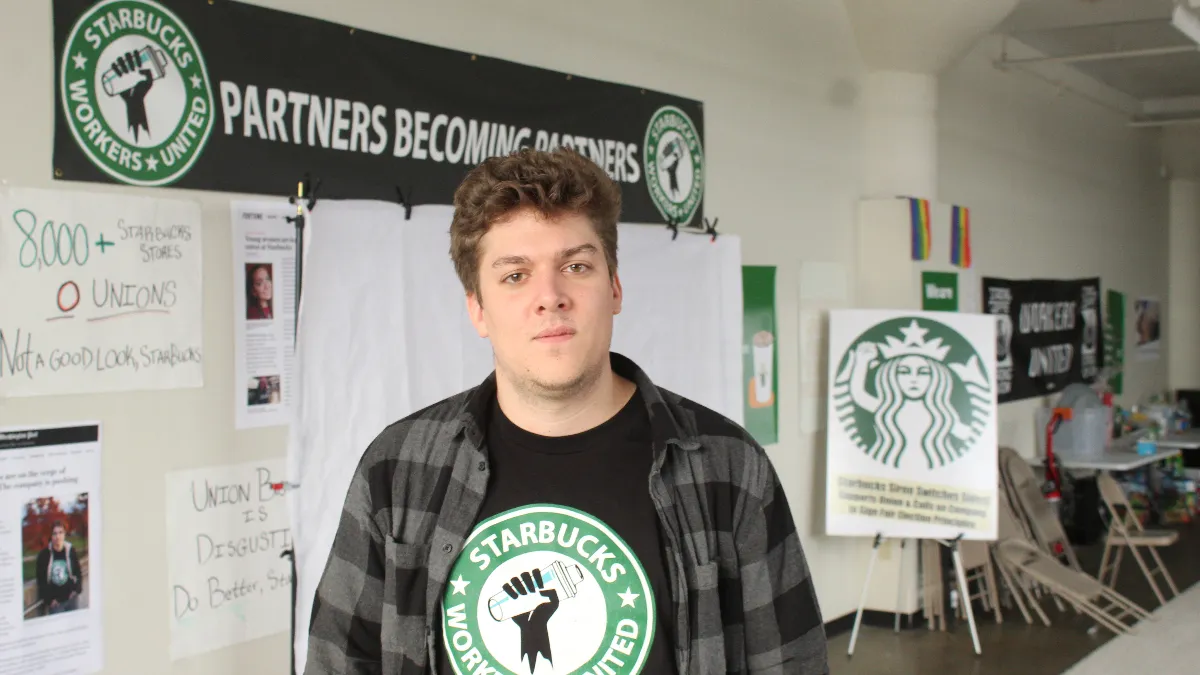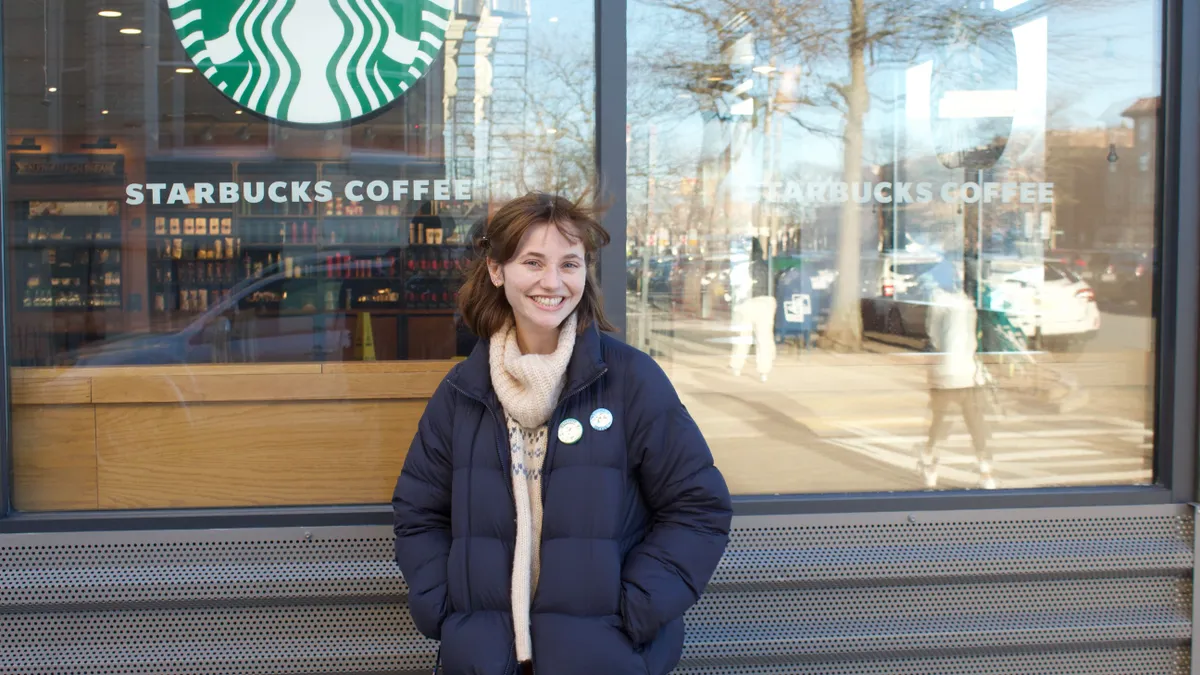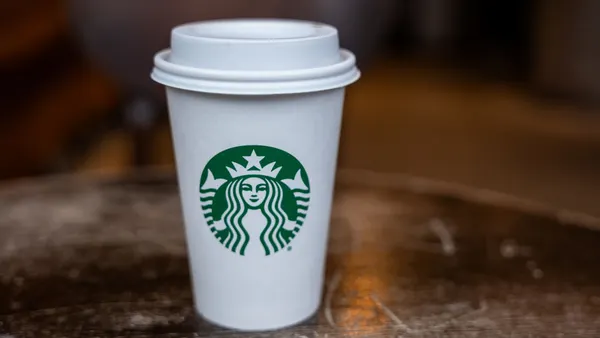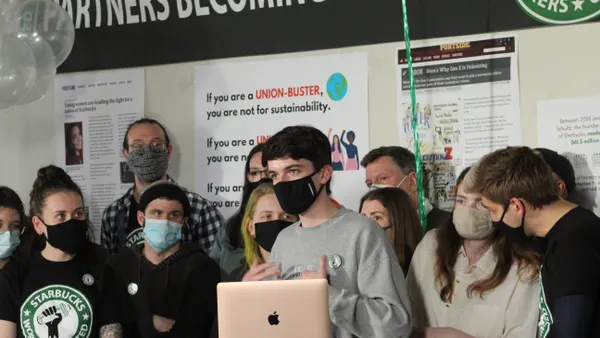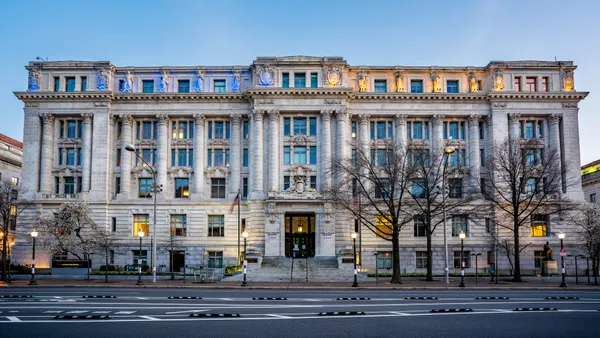After more than three months of public campaigning, the union drive at Starbucks stores in the Buffalo, New York, area is nearing the decisive moment. With the ballots out, and the vote count set for Dec. 9th, here's a look back at what may become the most significant union drive at a QSR chain in decades.
On Aug. 23, Starbucks workers at several stores in the Buffalo, New York, area announced the formation of an organizing committee in a letter to Starbucks CEO Kevin Johnson. On Aug. 30, workers at five stores filed for a National Labor Relations Board election. Two of those petitions were later withdrawn by workers, reportedly to ease the election process for the other three locations. Workers told the New York Times that they wanted to unionize in response to harsh working conditions, lax pandemic safety measures and low staffing levels. The NLRB granted those petitions, and on Nov. 10, ballots went out to eligible workers at three stores.
Starbucks workers told Restaurant Dive that the company has flooded the Buffalo area with support managers and asked workers to attend meetings aimed at quashing the union drive. Workers also said Rossann Williams, EVP and president of Starbucks North America, came to Buffalo to bolster anti-union efforts.
Amid those efforts, three more stores filed for elections on Nov. 9. Workers United, the Service Employees International Union affiliate helping the organizing committee in Buffalo, alleged Starbucks terminated a manager at a Mesa, Arizona, Starbucks for leaking documents to the union. Starbucks denied the allegation. Workers at that Mesa store petitioned for an NLRB election after sending a letter to Johnson on Nov. 18.
The NLRB will count the ballots from the three stores where voting is taking place on Dec. 9, and may announce the results that afternoon. Restaurant Dive will be on the ground in Buffalo to cover the outcome. If Workers United wins, the NLRB will certify that union as the representative of those workers. But the union will face a difficult prospect: negotiating a contract at a handful of stores in a company with thousands of stores. Recently, the International Workers of the World negotiated a contract with Burgerville that covered five stores, marking what appears to be the first QSR union contract in the U.S. That process took three and a half years and 51 bargaining sessions.
If Starbucks wins, the company still faces NLRB charges filed by workers for its anti-union campaign, but like Hello Fresh in Colorado, it will have staved off one of the most serious organizing drives in a low-union density industry in recent years. But even a company victory in the raw vote count may not mean the end of the organizing drive. For example, the NLRB yesterday authorized a new union election at one of Amazon's warehouses in Alabama after organizers accused the company of illegally interfering in election proceedings. In April, the majority of employees at the site voted to reject the union.
As the vote approaches, take a look below at our coverage of how Starbucks' union activity has developed so far.

